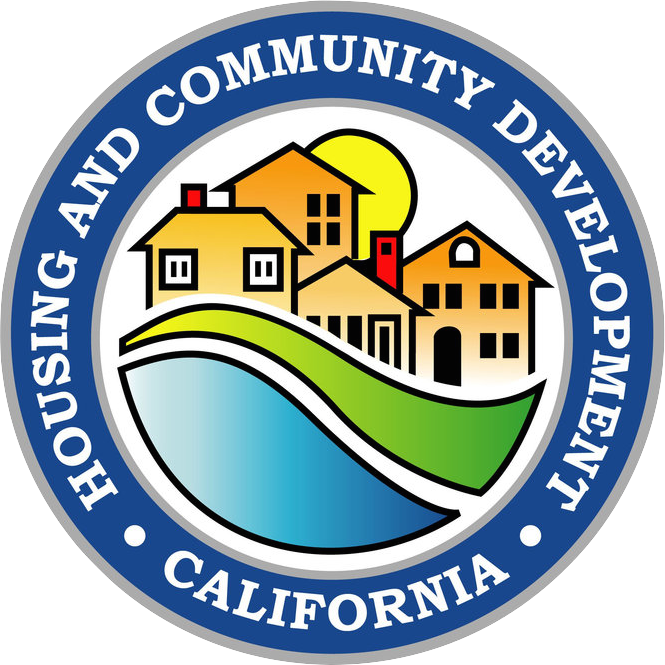Community Development Block Grant (CDBG) Program - Neighborhood Stabilization Program (NSP)
The Housing Economic and Recovery Act of 2008 provided $3.9 billion nationwide for the Neighborhood Stabilization Program (NSP), which provided funds to state and local governments to purchase abandoned and foreclosed homes and residential property.
The goal was to stabilize falling home prices and rejuvenate neighborhoods and communities that were hardest hit by the foreclosure crisis. The 2008 funding became known as “NSP1;” the $1.9 billion provided under the American Reinvestment and Recovery Act of 2009 (ARRA) was known as “NSP2;” and “NSP3,” established as part of Section 1497 of the Wall Street Reform and Consumer Protection Act of 2010 (Dodd-Frank Act), provided additional assistance for the redevelopment of abandoned and foreclosed homes with an emphasis on rental activities.
NSP1: Tiers 1 & 2 — Emergency Assistance for Redevelopment of Abandoned & Foreclosed Residential Properties
The NSP1 Tiers 1 & 2 Notice of Funding Availability (NOFA) is available for information purposes.
- Spanish Public Notice for Comment — Neighborhood Stabilization Program 2019 (PDF)
- Public Notice for Comment — Neighborhood Stabilization Program — 2019 (PDF)
- Neighborhood Stabilization Program — Action Plan Substantial Amendment — 2019 (PDF)
- Neighborhood Stabilization Program — Action Plan Non-Substantial Amendment — 2022 (PDF)
NSP1: Tiers 1 & 2 – Guidance Documents
- NSP "Contiguous”: For purposes of the California Department Housing and Community Development's (HCD’s) Neighborhood Stabilization Program (NSP), "contiguous" jurisdictions represent jurisdictions that are located within the boundaries of the same county.
NSP1: Tier 3 - Affordable Rental Housing Component
At least 25 percent of the total NSP1 allocation was required to be provided to households at or below the 50 percent Area Median Income (AMI) level for the area. To accomplish this, HCD provided an NSP1-Affordable Rental Housing Notice of Funding Availability for the redevelopment or rehabilitation of multi-family rental projects that had been foreclosed upon.
NSP3: Acquisition, Rehabilitation, and Rental or Resale of Single Family Residential Properties
CDBG Program — Neighborhood Stabilization Program (NSP) Quarterly Performance Reports (QPRs)
NSP1
NSP1 Quarterly Performance Report — Q4 2023 (PDF)
NSP1 Quarterly Performance Report — Q3 2023 (PDF)
NSP1 Quarterly Performance Report — Q2 2023 (PDF)
NSP1 Quarterly Performance Report — Q1 2023 (PDF)
NSP1 Quarterly Performance Report — Q4 2022 (PDF)
NSP1 Quarterly Performance Report — Q3 2022 (PDF)
NSP1 Quarterly Performance Report — Q2 2022 (PDF)
NSP1 Quarterly Performance Report — Q1 2022 (PDF)
NSP1 Quarterly Performance Report — Q4 2021 (PDF)
NSP1 Quarterly Performance Report — Q3 2021 (PDF)
NSP1 Quarterly Performance Report — Q2 2021 (PDF)
NSP1 Quarterly Performance Report — Q1 2021 (PDF)
NSP1 Quarterly Performance Report — Q4 2020 (PDF)
NSP1 Quarterly Performance Report — Q3 2020 (PDF)
NSP1 Quarterly Performance Report — Q2 2020 (PDF)
NSP1 Quarterly Performance Report — Q1 2020 (PDF)
NSP1 Quarterly Performance Report — Q4 2019 (PDF)
NSP1 Quarterly Performance Report — Q3 2019 (PDF)
NSP1 Quarterly Performance Report — Q2 2019 (PDF)
NSP1 Quarterly Performance Report — Q1 2019 (PDF)
NSP3
NSP3 Quarterly Performance Report — Q4 2023 (PDF).
NSP3 Quarterly Performance Report — Q3 2023 (PDF)
NSP3 Quarterly Performance Report — Q2 2023 (PDF)
NSP3 Quarterly Performance Report — Q1 2023 (PDF)
NSP3 Quarterly Performance Report — Q4 2022 (PDF)
NSP3 Quarterly Performance Report — Q3 2022 (PDF)
NSP3 Quarterly Performance Report — Q2 2022 (PDF)
NSP3 Quarterly Performance Report — Q1 2022 (PDF)
NSP3 Quarterly Performance Report — Q4 2021 (PDF)
NSP3 Quarterly Performance Report — Q3 2021 (PDF)
NSP3 Quarterly Performance Report — Q2 2021 (PDF)
NSP3 Quarterly Performance Report — Q1 2021 (PDF)
NSP3 Quarterly Performance Report — Q4 2020 (PDF)
NSP3 Quarterly Performance Report — Q2 2020 (PDF)
NSP3 Quarterly Performance Report — Q1 2020 (PDF)
NSP3 Quarterly Performance Report — Q3 2019 (PDF)
NSP3 Quarterly Performance Report — Q2 2019 (PDF)
NSP3 Quarterly Performance Report — Q1 2019 (PDF)
Purpose
Grant funds were made available for the purpose of providing affordable housing for very low-income and low-income households in the areas that continue to experience the impacts of the foreclosure crisis. A minimum of 25 percent of NSP3 funding will be used to assist households at or below 50 percent of the area median income (AMI), with the remaining funds assisting households at or below 80 percent of AMI.
Eligible Activities
Acquisition, rehabilitation, and either resale or rental of NSP3-eligible foreclosed or abandoned residential properties, including green and energy-efficiency retrofits where feasible, in order to rent or sell them to income-eligible households. Eligible properties contained up to four units. Income-eligible households earned 80 percent or less of the adjusted AMI.
Eligible Applicants
Cities and counties that do not receive NSP3 funding directly from HUD, and which meet the following HUD NSP criteria:
- NSP3 Needs Scores of 18 or higher;
- Unemployment numbers at or above 15 percent; and,
- Number of units required to be impacted at or above four units per LOGRECNO (record number from HUD’s NSP3 Needs report).
Funds were divided between the eligible applicant jurisdictions, based on final scores.
Application Process
HCD issued a NSP3 Request for Proposals (RFP). The 2013 RFP is available for information purposes.
Get Funding
Applications are invited through the issuance of Notices of Funding Availability (NOFAs).
Current NOFA
The NSP program does not have a current NOFA. However, if future funding becomes available, NOFA information will be posted here.
Previous NOFAs
There are currently no previous NOFAs available for NSP.
Awards
There are currently no awards available for NSP.
Program Forms
At this time, there are currently no general forms for the NSP program on the website.
Management Memos
Training and Technical Assistance
At this time, there are currently no NSP Training and Technical resources on the website.

